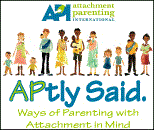So, I am sure that I will blog about cloth diapering tons in the future but I thought it would be a good idea to educate those of you who may be wondering where to start or what options are available. First, let me just say that cloth diapering isn't what our mothers remember it to be. In today's world, there are many different varieties of cloth diapers and covers to choose from depending on the amount of money you would like to spend, the amount of laundry you would like to do, the amount of leaks you are willing to deal with, and just how pretty you think your child's diaper should be. Therefore, I will break down the many different ways to cloth diaper your child as well as giving you the basics on laundry.
1.Flats and Prefolds. These are the cheapest way to go. Flats are rectangular pieces of cloth that need to be folded into layers before putting them on your child; whereas, prefolds have already been sewn into layers. Both flats and prefolds need to be safety pinned onto your child but this can be done with
Snappi Cloth Diaper Fasteners
which grip each side of the diaper like an ace bandage clip. Then you put a diaper cover over the flat or prefold to keep moisture on the inside.
- Pros: Cheapest cloth diapering system available. Fast drying time.
- Cons: Folding can be complicated especially on moving children. Leaks are common. It is more time consuming than other methods.
2.Fitteds. These are diapers that are made to fit a child similar to a disposable. Each diaper is made of absorbent materials and includes a snap-in liner for added protection. They are usually sized as XS,S,M,L, and XL based on a child's weight and are also worn with a diaper cover.
- Pros: Leaks are less likely. Much slimmer than other types of cloth diapers. Fast dry time. Very user friendly product.
- Cons: Can be quite expensive due to sizing up and covers.
3. Pockets. These fitted diapers include a pocket that is stuffed with an absorbent liner. Pockets do not need covers because they contain a built in waterproof outer layer.
- Pros: No cover necessary. Faster dry time due to the removable liner. Leaks are less likely. Very user friendly product.
- Cons: Can be costly due to sizing up. Must remove dirty liners before washing.
4. All-in-ones. This type of diaper has it all, a built in cover and a built in absorbent liner.
- Pros: No liners to insert and no covers to purchase.
- Cons: Extremely long dry time. Can still be costly due to sizing.
5. One Size. Diapers with adjustable velcro and/or snaps to make the diaper grow with your baby.
- Pros: Very cost efficient. Very absorbent.
- Cons: Quite bulky on smaller babies. Generally do not fit newborns. Can be leaky on smaller children.
Once you've decided which diapers are right for you, it's time to figure out laundry. Laundry frequency should be figured out based on the fact that newborns tend to use 8-12 diapers a day and older babies use 6-8 so if you are trying to be frugal, get 14 of the first size and try it out (You may soon realize that doing a load of diapers every day isn't for you). As far as the actual washing goes, it isn't as gross or difficult as you might think, especially if you breastfeed! While breastfeeding, you don't need to wash anything out; just put the diapers in the washer with detergent and wash with one cold/cold cycle and one hot/cold cycle. Once your child begins to make more solid bowel movements, you dump it in the toilette before washing. That is pretty much it!





No comments:
Post a Comment